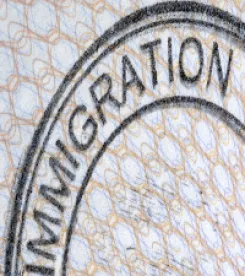U.S. Immigration and Customs Enforcement (ICE) is at it again, settling on a substantial amount with a company that, in good faith, used an electronic I-9 storage system that ICE deemed defective. Last September, ICE announced a $1,047,110 settlement reached with the clothing retailer Abercrombie & Fitch for violations of the Immigration and Nationality Act relating to its obligation to verify the employment eligibility of its workers.
Shift in ICE Strategy Focuses on Employers and Their I-9 Employment Verification Process
As of 2009, ICE has shifted its strategy to pursue the employer of an illegal workforce rather than the alien worker. An I-9 inspection is a less expensive way to enforce US immigration law rather than a full-blown raid. The specter of an audit has the added benefit of deterring employers and stopping the attraction of US jobs to illegal workers. Speaking to the Abercrombie & Fitch settlement, Brian M. Moskowitz, special agent in charge of ICE Homeland Security Investigations for Ohio and Michigan said:
"Employers are responsible not only for the people they hire but also for the internal systems they choose to utilize to manage their employment process and those systems must result in effective compliance… This settlement should serve as a warning to other companies that may not yet take the employment verification process seriously or provide it the attention it warrants."
What An Employer May Expect After an ICE Inspection
Upon completion of its inspection, ICE will notify the employer in writing of the results of the inspection. Following is a list of the most common notices issued.
-
Notice of Inspection Results – notifies a business that it was found to be in compliance.
-
Notice of Suspect Documents – advises the employer that ICE has determined that one or more employees are unauthorized to work and advises the employer of the possible criminal and civil penalties for continuing to employ this individual or individuals. ICE then provides the employer and employee an opportunity to present additional documentation to demonstrate work authorization if either believe the finding is in error.
-
Notice of Discrepancies – advises the employer that ICE has been unable to determine work eligibility. The employer should provide the employee with a copy of the notice and give the employee an opportunity to present additional documentation to establish his or her employment eligibility.
-
Notice of Technical or Procedural Failures – identifies technical violations found during the audit, giving the employer 10 business days to make corrections, after which uncorrected technical and procedural failures will become substantive violations.
-
Warning Notice – issued in circumstances where substantive verification violations were identified, but circumstances do not warrant a monetary penalty and there is the expectation of future compliance by the employer.
- Notice of Intent to Fine – may be issued for the following violations: substantive, uncorrected technical, knowing hiring and continuing to employ
A Fine Looks Imminent: What is Next
Along with the Notice of Intent to Fine (NIF), charging documents that specify the violations will be issued as well, upon which the employer can choose either to negotiate a settlement with ICE, or request a hearing before the Office of the Chief Administrative Hearing Officer (OCAHO). Should the employer fail to take action after receiving an NIF, ICE will issue its Final Order.
ICE’s Internal Guidelines in Setting Fines
The Department of Homeland Security recently released to the public certain guidelines within ICE that guide its investigators on when to enhance or mitigate the assessed fine. There are two different schedules: one for employers who have substantive and uncorrected technical I-9 violations, and one for employers who knowingly hired or continue to employ unauthorized workers. Penalties are set by dividing the number of violations by the number of employees (violation percentage) and then considering whether the violation is a first, second, or third or more offense. Once the fine is determined, ICE investigators have authority to enhance or mitigate the fine by 5% by considering each of the following five factors: business size, good faith, seriousness, actual unauthorized workers, and the employer’s history relating to compliance or violations. Fines can range 25% above or below the base recommended fine.
Conclusion
Earlier related alerts found on our firm website have sought to provide our clients with guidance for proper I-9 policies and compliance, including what to look for in selecting an electronic I-9 verification system. This article describe the possible result of an ICE finding an employer is not complying with the law. As Abercrombie & Fitch discovered, employers will be held responsible for defects in their I-9 electronic verification systems, despite good faith.





 />i
/>i
